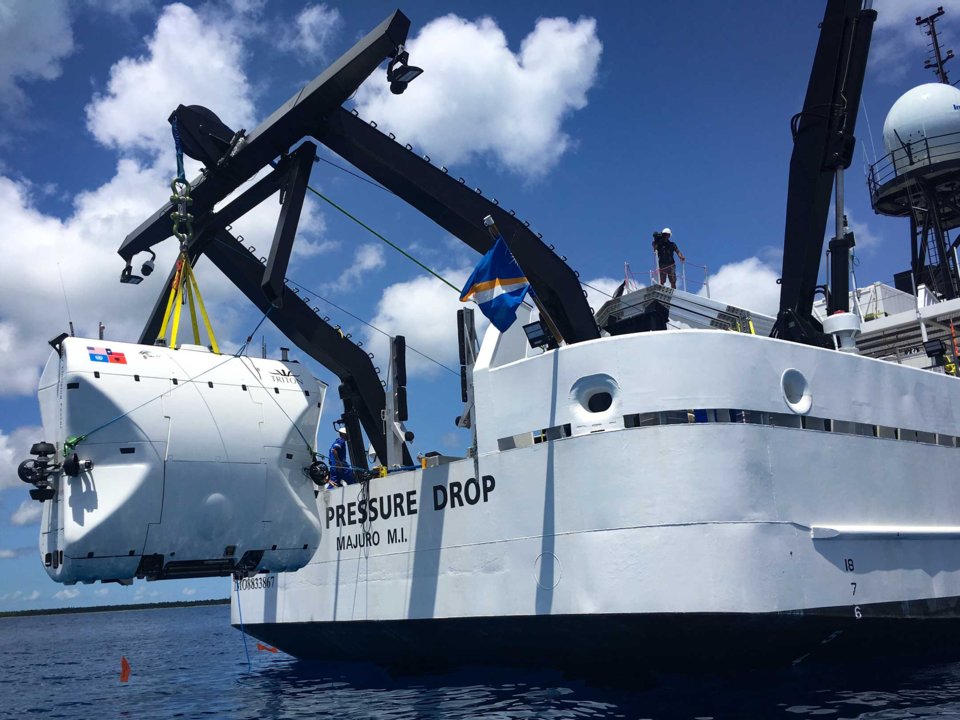For only the third time in history, a human-occupied vehicle made the 11-kilometer journey into Challenger Deep, the deepest point in the ocean, and, more importantly, returned. Its occupant, investor Victor Vescovo, became the fourth person, behind Don Walsh and Jacques Piccard in the Trieste, and James Cameron in the Deepsea Challenger, to reach the bottom of the Mariana Trench. With over four hours of bottom time, he now also holds the record for the most time spent at the bottom of the world.
Among a handful of potential new species, Vescovo also observed plastic at the deepest point on the planet. Deep-sea plastics have been observed in all the world’s oceans and are now a common sight on most expeditions into the deep ocean. Plastics have been documented in the Mariana Trench for several years and more recent surveys have found plastic in the guts of marine animals. Though places like the Mariana Trench often seem remote, almost all deep-ocean trenches are paired with island chains formed from the same tectonic processes that create the trench, and the presence of pervasive plastics in deep oceans has major implications for the people living on the edge of the abyss. “I imagine pollution in the Mariana Trench is an abstract concept for most people, but for those of us living in the Mariana Islands this has consequences for what ends up on our dinner plates,” Angelo Villagomez of the Pew Bertarelli Ocean Legacy Project said in the Atlantic, earlier this year.
In addition to large plastic trash found on the seafloor, microplastics are now found in the guts of almost all animals pulled from the depths of the western Pacific, and the legacy of nuclear testing in the Pacific has left it’s mark on a seafloor that only four people in history have set their eyes upon.
What sets Vescovo’s dive apart from other record-setting dives to Challenger Deep was its funding. Past dives have either been military partnerships (in the case of Trieste) or public/private/foundation partnerships. Cameron’s Deepsea Challenger expedition was funded through private equity as well as organizations like National Geographic with support from US agencies like NOAA and the National Science Foundation. Vescovo’s venture appears to be entirely funded by private individuals.
The Triton 36000/2 Hadal Exploration System, which includes the submarine itself, as well as its support ship, is currently for sale via Triton Submarines. At slightly less than $50 million USD, it’s practically a bargain.
Last year, we reported on the rise of low-cost and community-supported exploration technology and what it might mean for monitoring and regulating deep-sea mining prospects when private citizens can access the deep seafloor without the support of nations, commercial enterprises, or large institutions. There is a burgeoning community of Do-It-Yourself submersible enthusiasts going deeper every year and individuals such as Karl Stanley have built successful businesses around operating his self-designed and self-built submarine Idabel, which has done over a thousand dives to more than 900 meters. Add to that the capacity now for individuals of significant wealth to access full-ocean-capable vehicles.
It is worth noting that the world of privately submersibles is fraught with peril. The unfortunately-name UC3 Nautilus, at one time the world’s largest privately-owned submarine, was intentionally sunk by its owner in conjunction with the murder of journalist Kim Wall. That incident highlights the dangers of both the technology and the oft-eccentric owners who desire to acquire personal submersibles. However, outside of the intentional sinking of the Nautilus, there have been no civilian fatalities aboard personal submersibles since the early 1970s.
There are currently no international regulations in place to prevent a private citizen from using their own human-occupied submersible from accessing any region within the area beyond national jurisdiction.
This presents additional challenges and opportunities for monitoring deep-sea mining operations in the Area. The cost to access the deep ocean continues to go down while new platforms as well as financial mechanisms to acquire and use deep-sea capable technologies creates potential for monitoring to not just be conducted by the ISA or contractors, but by stakeholders, NGOs, and institutions, as well as private citizens, independent of support or even consent from companies engaged in deep-sea mining. While these developments can certainly lead to conflict, especially with respect to safety if multiple stakeholders have equipment deployed in the same general region, it can also lead to an unprecedented level of transparency, collaboration, and accountability for an industry working in the remote depths of the sea.
Representatives from the International Seabed Authority, understandably, declined to comment on this hypothetical potentiality.

